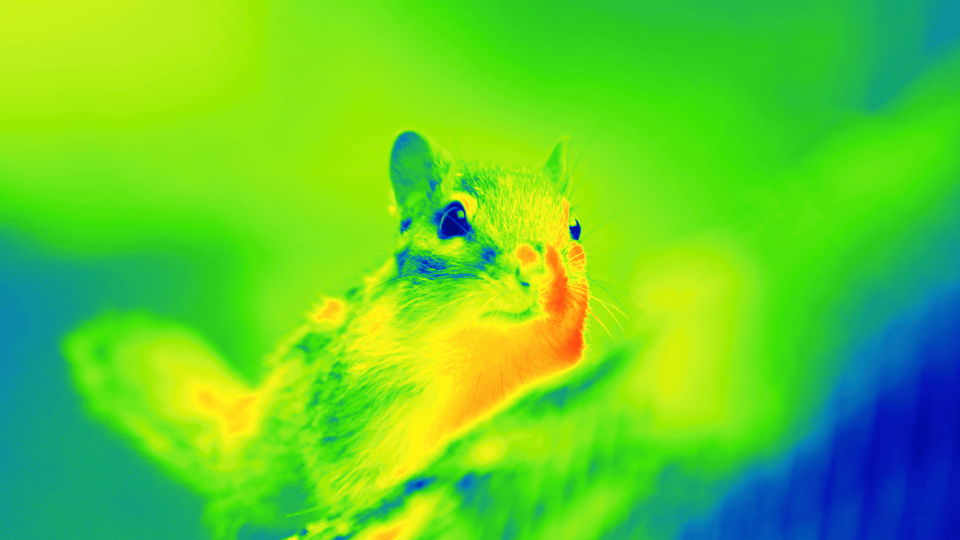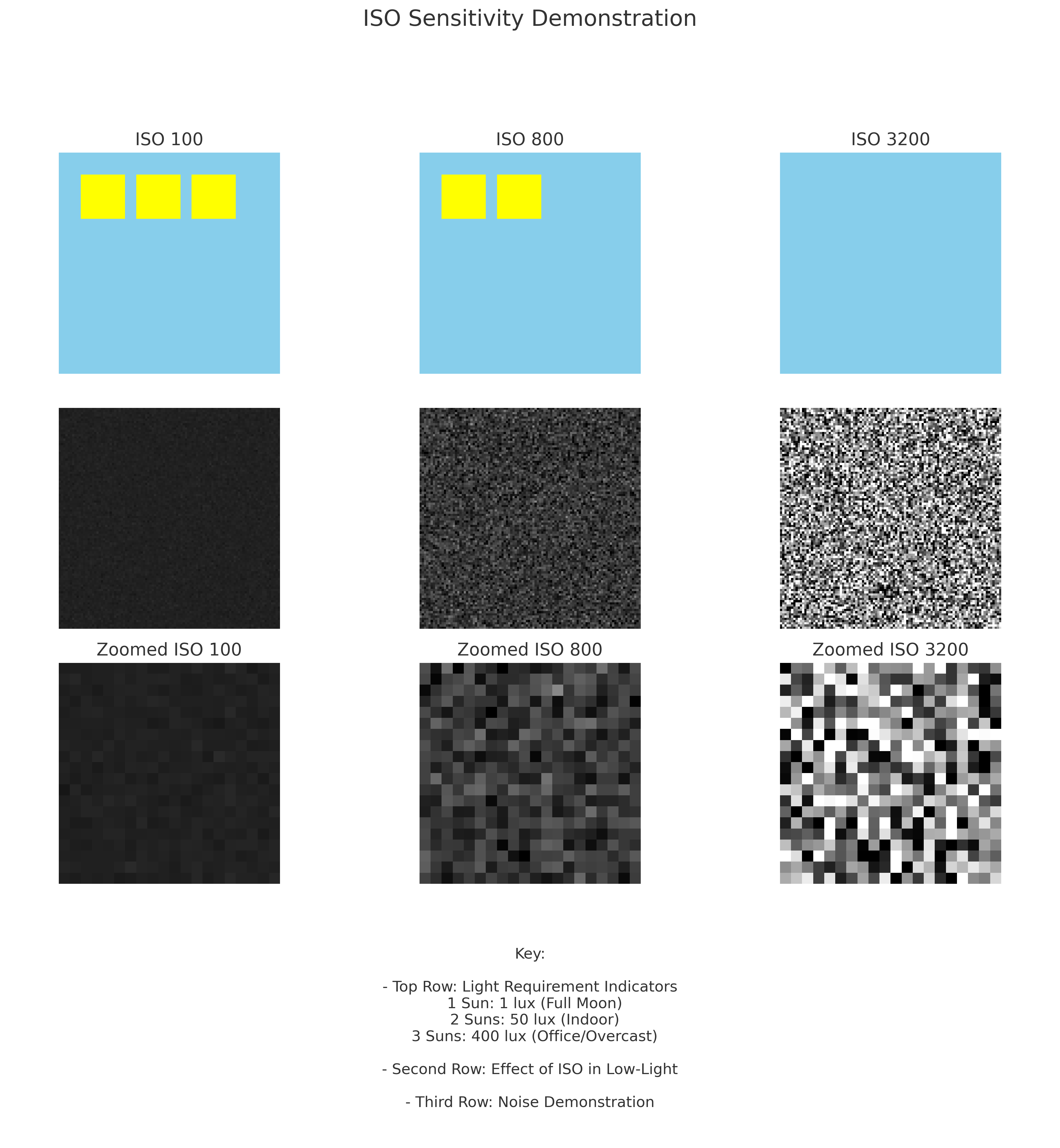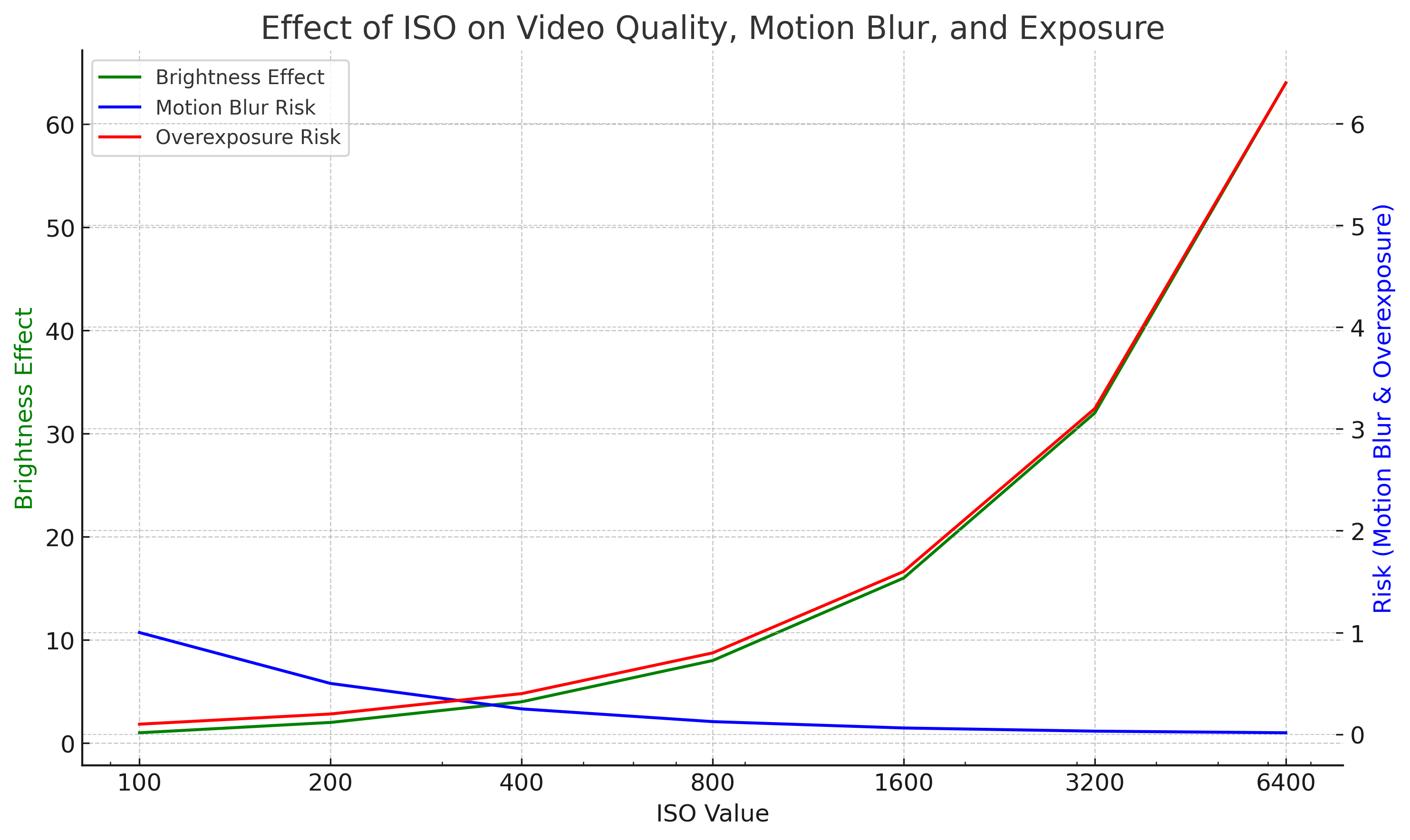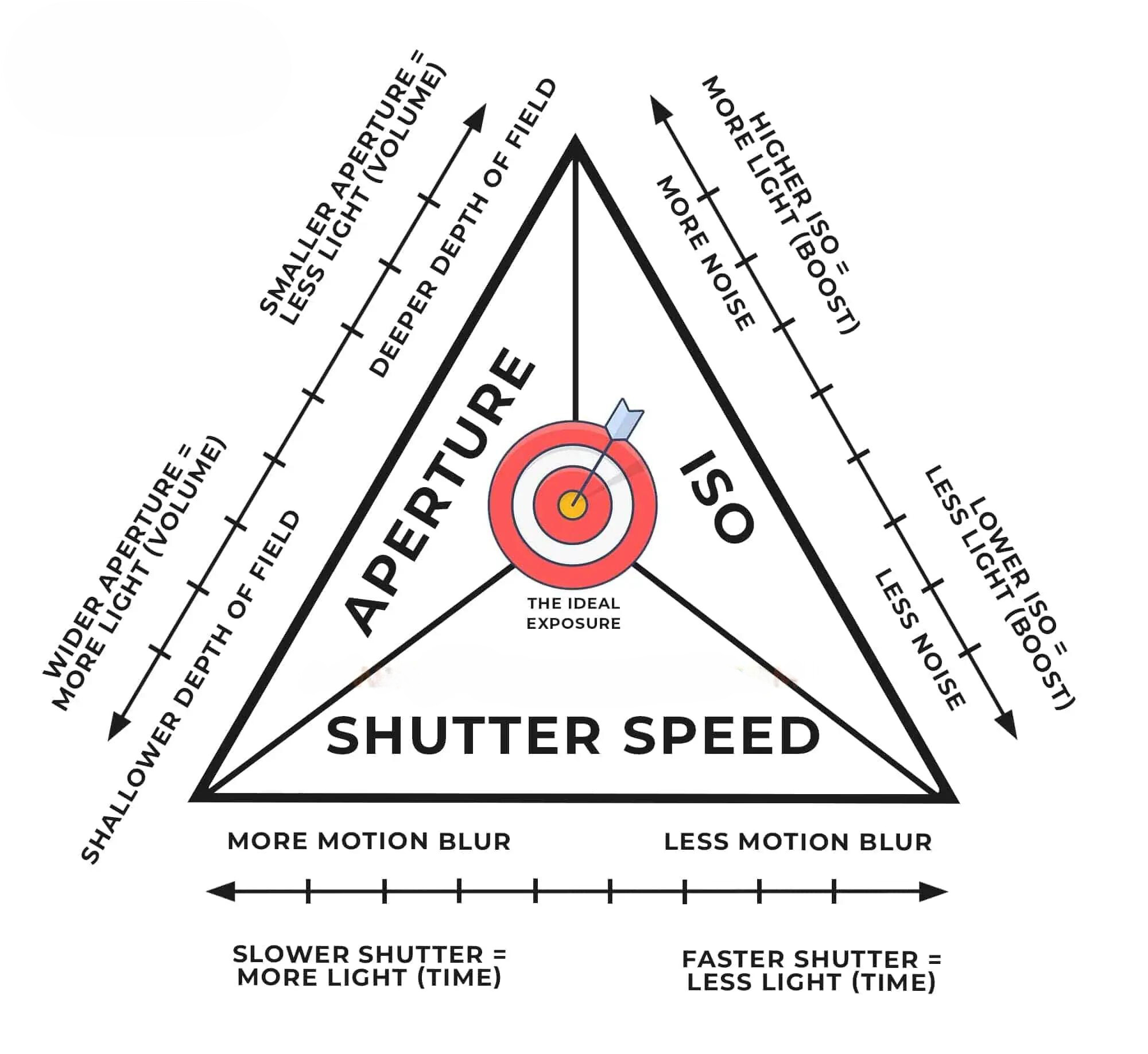Introduction
In the realm of videography, ISO ratings serve as a pivotal aspect, shaping the quality, clarity, and adaptability of the visual content produced. Especially when we delve into specialized fields such as military operations, thermal imaging, and night vision, the significance of ISO ratings becomes even more pronounced.
These niche areas often present unique challenges – be it capturing footage in extremely low-light conditions or discerning subtle temperature differences in thermal imaging. ISO, as a measure of a camera’s sensitivity to light, plays a crucial role in addressing these challenges and achieving the desired video quality.


The concept of ISO is not new; its roots trace back to the days of film photography. However, with the advent of digital technology, its application and nuances have evolved considerably. In modern digital videography, ISO ratings have become more versatile and sophisticated, offering videographers a broader spectrum of possibilities and precision. As technology continues to advance, understanding the intricacies of ISO becomes indispensable for professionals aiming to harness its full potential in various videography domains.
Basic Definition and Concept
The term “ISO” has become almost synonymous with photography and videography, yet its fundamental concept is often misunderstood or oversimplified. At its essence, ISO represents the sensitivity of a camera’s sensor to light. In videography, just as in photography, it plays a pivotal role in determining how brightly or darkly an image (or frame) will appear.

- ISO as a Measure of Sensitivity to Light in Videography: Think of the camera’s sensor as a canvas that captures light to create an image. The ISO setting adjusts how receptive this canvas is to the incoming light. A lower ISO number (e.g., ISO 100 or 200) means the sensor is less sensitive and requires more light to produce a clear image. Conversely, a higher ISO number (e.g., ISO 800, 1600, or even higher) increases the sensor’s sensitivity, enabling it to produce clearer images in lower light conditions. However, this increased sensitivity comes at the cost of increased noise or grain in the image.
- Correlation Between ISO Numbers and Sensitivity: ISO ratings follow a somewhat standardized scale, doubling (or halving) with each step. For instance, ISO 200 is twice as sensitive as ISO 100, and ISO 400 is twice as sensitive as ISO 200. This doubling implies that for each increment, the camera requires half the amount of light to achieve the same exposure. It’s crucial to understand this relationship because it provides a predictable and methodical approach to adjusting exposure settings in varying lighting conditions.
ISO in Standard Videography
In the world of standard videography, ISO isn’t just a technical term; it’s a powerful tool that directly influences the outcome of the footage. At its core, ISO determines a camera’s sensitivity to light. When adjusted correctly, it can be the difference between a crisp evening shot and a blurry, indistinct one.
- Effect on Video Quality, Motion Blur, and Exposure: As seen in the graphic below ISO ratings directly impact the brightness of a video. A higher ISO value increases the camera’s sensitivity to light, making it easier to shoot in low-light conditions without compromising too much on shutter speed. This is particularly beneficial when capturing fast-moving subjects, as it reduces motion blur. However, there’s a trade-off. While a higher ISO can brighten a video, it can also lead to overexposure in brighter conditions, making scenes appear washed out or lacking in detail.
- Challenges in Managing ISO for Video vs. Still Photography: The dynamics of video and still photography are inherently different. In photography, a brief moment is captured, allowing for more flexibility in settings. In videography, continuous footage means that consistent lighting and exposure are crucial. Consequently, while photographers might change ISO frequently based on their subject and environment, videographers often need a more stable ISO setting to ensure consistency throughout a clip. Moreover, rapidly changing ISO in the middle of a video can result in noticeable and often jarring shifts in brightness.
- Higher ISO and Video Noise: One of the most pronounced challenges with cranking up the ISO is the introduction of noise or grain. In dim conditions, it might be tempting to significantly increase the ISO to achieve a brighter image. However, this often results in a grainy or “noisy” video, where fine details are lost amidst a speckled pattern of digital artifacts. This noise isn’t just visual; it can also distort colors, making scenes appear less natural. Modern cameras and post-processing software offer noise reduction features, but these can sometimes result in a loss of detail, leading to a softer image.

ISO in Military Videography
Military videography, unlike conventional filming, often comes with its unique set of challenges and requirements. The circumstances surrounding military operations, such as the need for stealth, clarity in various lighting conditions, and the unpredictability of the environment, necessitate a comprehensive understanding and strategic application of ISO settings.
Specific Requirements for ISO in Military Contexts
- Stealth: Operations, especially those undertaken during the night or in low-light scenarios, require equipment that can capture footage without giving away the position of troops. A higher ISO can aid in capturing clearer footage without the need for external light sources, which can betray a unit’s position.
- Clarity: In reconnaissance and surveillance, clarity is paramount. Ensuring that details are captured can make the difference in identifying friend from foe or spotting hidden threats. An optimal ISO setting, balanced with other camera settings, ensures that every crucial detail is captured.
- Low-Light Operations: Military operations don’t pause for the ‘golden hour’. They occur at all times of the day and under various lighting conditions. A camera’s ISO setting plays a crucial role in these scenarios, enabling soldiers to capture usable footage even when the light is far from ideal.
Challenges in High-Risk Environments
High-risk environments, such as active war zones or areas with potential threats, pose several challenges for videography:
- Variable Lighting: From the dark interiors of buildings to bright desert landscapes, the lighting can change rapidly. ISO settings need to be adjusted on-the-fly to ensure clarity.
- Fast Movements: Whether it’s capturing the rapid motion of vehicles, aircraft, or personnel, the camera settings, including ISO, need to account for the swift changes in the scene.
- Durability of Equipment: High ISO settings can generate heat, and in combination with already harsh conditions, there’s a risk to equipment. Ensuring that the camera can handle prolonged use at high ISO levels is vital.
Real Life Scenarios: ISO in Action with Thermal Imaging
Thermal imaging cameras, unlike traditional cameras, detect radiation in the infrared range of the electromagnetic spectrum. Instead of relying on visible light, they capture variations in heat emitted by objects, people, and vehicles. The concept of ISO for thermal cameras is different than for standard cameras, as they don’t capture light per se. However, the sensitivity settings in thermal cameras can be equated to the ISO in standard cameras. Here are some illustrative scenarios:
- Night Reconnaissance in Afghanistan: During a stealth operation, a special forces team utilized thermal imaging cameras with sensitivity settings equivalent to an ISO of 5,000,000. This allowed them to detect the heat signatures of hidden insurgents within a compound. Even in complete darkness, the heat emitted by the human body was unmistakable, ensuring the team could strategize their approach effectively.
- Desert Surveillance: Deserts are challenging for thermal imaging due to the high ground temperatures. During an afternoon surveillance mission, the team used a setting equivalent to ISO 100,000. This sensitivity level helped differentiate between the heat from the sand and potential vehicle or human activity, crucial for spotting movements of interest.
- Jungle Patrols: In the dense, humid conditions of a jungle, everything feels warm. On a patrol, soldiers equipped with thermal imaging cameras set their sensitivity to levels akin to ISO 800,000. This setting enabled them to discern subtle temperature differences, differentiating between animals, water bodies, and potential threats.
Practical Implications in Specialized Videography
Specialized videography, especially in contexts like military operations, thermal imaging, and night vision, often demands a nuanced understanding of camera settings. A cornerstone concept in achieving the desired footage quality is the “Exposure Triangle” – a triad comprising ISO, aperture, and shutter speed.

The “Exposure Triangle”: ISO, Aperture, and Shutter Speed in Videography
- ISO: As discussed, ISO determines the camera sensor’s sensitivity to light. A higher ISO captures brighter footage in low-light conditions but can introduce grain or noise.
- Aperture: Represented by the ‘f-number’ (e.g., f/2.8, f/4), aperture dictates how much light enters the camera lens. A smaller f-number (or a wider aperture) allows more light to enter, which is beneficial in dim conditions. However, it also narrows the depth of field, potentially blurring objects not in focus.
- Shutter Speed: Often expressed as a fraction of a second (e.g., 1/60), shutter speed determines how long the camera’s sensor is exposed to light. In videography, a common rule is that the shutter speed should be roughly double the frame rate for smooth motion. For instance, for a frame rate of 30fps, a shutter speed of 1/60 is ideal.

Real-World Scenarios in Military, Thermal, and Night Vision Videography
- Military Operations in Urban Areas: Urban scenarios often present variable lighting – from the dark interiors of buildings to open streets. Here, a balanced ISO (e.g., ISO 800) combined with a wider aperture (e.g., f/2.8) and standard shutter speed (1/60) might be effective.
- Thermal Imaging in Forested Regions: In dense forests, where light is patchy, thermal imaging cameras focus on heat rather than light. Sensitivity settings equivalent to higher ISOs, such as 1,000,000, can help detect minute differences in temperature, crucial for spotting wildlife or human activities.
- Night Vision Surveillance on Borders: For border patrols relying on night vision, achieving clarity without external light sources is essential. Cameras might employ settings equivalent to ISO 5,000,000, with appropriate noise reduction techniques in place to ensure clarity.
Recommendations for Specific Situations
- Surveillance in Urban Settings: For static cameras in well-lit areas, a lower ISO (e.g., ISO 200) with a narrower aperture (e.g., f/8) might suffice. For moving cameras or drones, stabilization and a balanced ISO (e.g., ISO 800) would be crucial.
- Reconnaissance in Low-Light Terrains: Here, a high ISO setting combined with a wider aperture can be beneficial. Ensuring the shutter speed remains double the frame rate will help in capturing smoother footage, even during rapid movements.
- Wildlife Monitoring with Thermal Imaging: In settings where wildlife might be stationary, sensitivity settings equivalent to ISOs of around 500,000 can help in detecting subtle temperature variations. For tracking moving animals, especially during the night, settings equivalent to higher ISOs, such as 2,000,000, with appropriate noise reduction, would be ideal.
Modern Innovations and ISO
The field of videography has been undergoing rapid advancements, especially when it comes to ISO and its capabilities. With the increasing need for clear footage in various lighting conditions, particularly in specialized videography scenarios, significant progress has been made in sensor technology and related areas.
Advances in Sensor Technology in Specialized Videography Contexts
Cameras have evolved beyond the traditional understanding of ISO as just a measure of sensitivity to light. Especially evident in scenarios such as military videography, night vision, and thermal imaging, are the innovative strides in sensor technology:
- Back-Illuminated Sensors: These sensors, known as BSI sensors, shift the electronic components to the sensor’s back, allowing for better light collection on the pixel surface. This enhancement ensures reduced noise at high ISO settings and optimal performance in low light.
- Dual Gain Architecture: Some modern sensors are designed to operate at two different amplification levels. This architecture is optimized for both well-lit and low-light scenarios, providing a consistent performance across a spectrum of ISO values.
- Pixel Binning: By combining the electric charge from adjacent pixels to form a ‘super pixel,’ this method, while reducing overall resolution, enhances sensitivity and the signal-to-noise ratio, which is particularly beneficial in dim conditions.
Emergence of AI-Enhanced Night Vision and Implications
One of the most groundbreaking developments in the realm of ISO and videography is the integration of deep learning AI for full-color night vision. Researchers at UC Irvine have showcased a proof-of-concept where AI was used to colorize images taken using only infrared light, approximating them to the scenes’ actual colors.
Insights into the AI-Enhanced Night Vision:
- Sights Unseen: Humans perceive only a narrow band of the light spectrum, making wavelengths outside of this range invisible to us. Technological advancements, however, enable viewing beyond this spectrum. While traditional night vision systems render infrared light into visible light in a single color (often a shade of green), deep learning AI offers the potential for full-color night vision.
- The AI Approach: The Irvine researchers trained a deep-learning algorithm using photos taken with monochromatic light sources, encompassing both various visible lights and infrared. By analyzing these labeled images, the AI learned to predict how an infrared image from a night vision camera would appear in full color. In tests, the AI was able to reproduce faces lit only with near-visible infrared light in accurate visible-light colors.
- Work in Progress: While the initial results have been promising, the AI’s predictions remain confined to its training. As stated by Andrew Browne from UC Irvine, there exists some variability in the AI’s outputs, but the reproduced images are almost indistinguishable from the real ones.
Future Trends and Technologies to Watch
- Quantum Film Sensors: These sensors, which use quantum dots instead of traditional silicon, have the potential to revolutionize the way cameras capture and process light, promising unparalleled ISO performance.
- ISO-less Cameras: Building on ISO-invariance, future technologies might introduce cameras that allow post-capture ISO selection, thereby maximizing post-production flexibility.
- AI-Enhanced Noise Reduction: With AI’s integration, cameras in the future might offer real-time noise reduction. These systems would intelligently analyze scenes and apply noise reduction algorithms even at extremely high ISO settings.
In the ever-evolving landscape of ISO in videography, these technological advancements not only refine the tools at a videographer’s disposal but also redefine the very art and science of capturing visuals. The integration of AI, as demonstrated by the researchers at UC Irvine, underscores the limitless possibilities that lie ahead.
Challenges and Limitations
While the advancements in ISO and sensor technologies have opened up new frontiers in videography, they also bring with them a unique set of challenges and limitations. Especially in specialized areas like military videography, thermal imaging, and night vision, mastering ISO settings is not just about understanding the technology but also about navigating the pitfalls associated with them.
Common Issues Faced by Videographers
- Noise and Grain: One of the most common challenges is the noise or grain that appears in footage when shooting at high ISO values. This can degrade image quality, making the footage appear less sharp and clear.
- Loss of Dynamic Range: At extreme ISO values, cameras might lose the ability to capture the full range of light and dark in a scene. This means details in very bright or very dark areas can get lost.
- Overheating: Especially in modern digital cameras with high ISO capabilities, prolonged use at extreme settings can lead to overheating. This not only affects performance but can also shorten the lifespan of the equipment.
- Inconsistent Color Reproduction: High ISO settings can sometimes lead to shifts in color reproduction, making it challenging to maintain color accuracy across different shots or scenes.
Solutions, Workarounds, and Techniques to Overcome Them
- Noise Reduction in Post-Processing: Modern video editing software offers powerful noise reduction tools that can help clean up footage shot at high ISO values. While it’s always better to capture the cleanest footage possible in-camera, post-processing can salvage shots that might otherwise be unusable.
- Bracketing: This technique involves taking multiple shots of the same scene at different ISO settings. These can then be combined in post-processing to create a single image or video clip that captures the best qualities of each.
- External Cooling: For prolonged shoots in high ISO settings, external cooling solutions, like fans or specialized camera coolers, can help mitigate the overheating issue.
- Custom White Balance: To tackle color inconsistency at high ISO values, videographers can set a custom white balance. This ensures that colors are consistent and accurate across different shots, even when the ISO settings change.
- Using Fast Lenses: Lenses with wide apertures (like f/1.4 or f/1.8) can capture more light, allowing videographers to shoot in lower light conditions without having to push the ISO as high.
- Investing in Modern Cameras with Better ISO Performance: Camera technology is continually evolving. Newer models often offer improved ISO performance with less noise and better color reproduction. For professionals, upgrading to a more recent camera model can sometimes be the best solution to ISO-related challenges.
Conclusion
In the intricate world of videography, the role of ISO stands out as a foundational pillar, especially in specialized fields such as military operations, thermal imaging, and night vision. Through the lens of ISO, we unravel the secrets of capturing visuals in diverse lighting conditions, striking a balance between clarity and authenticity. As technology races ahead, the nuances of ISO evolve, offering videographers an ever-expanding palette of possibilities.
While the technicalities of ISO might appear daunting initially, a deep understanding of its functionalities can unlock doors to unprecedented visual narratives. From capturing the stealth movements of military operations under the cloak of darkness to witnessing the unseen through thermal imaging, ISO plays a pivotal role.
However, in this rapidly evolving tech landscape, resting on one’s laurels is not an option. The videography tools and techniques of today might become obsolete tomorrow. Thus, it’s imperative for professionals and enthusiasts alike to remain inquisitive, to embrace continued learning, and to adapt to the changing tides.
In essence, understanding ISO is more than just grasping a camera setting; it’s about harnessing the power of light to tell compelling stories. As the world of videography continues to transform, those willing to evolve with it will find themselves at the forefront, crafting narratives that resonate, inspire, and captivate.
Additional Resources and Further Reading
For those looking to delve deeper into the intricacies of ISO, especially in specialized videography contexts such as thermal imaging and night vision, a wealth of resources are available. Whether you’re a beginner seeking foundational knowledge or an expert pursuing advanced techniques, here are some recommended materials to guide your journey:
Books
- “Understanding Exposure” by Bryan Peterson: A classic in the realm of photography and videography, this book breaks down the concept of exposure, of which ISO is a pivotal component.
- “The Filmmaker’s Handbook” by Steven Ascher and Edward Pincus: A comprehensive guide that covers all aspects of videography, including the technical nuances of ISO.
- “Night Vision: Exploring the Infrared Universe” by Michael Rowan-Robinson: While more focused on the astronomical applications, this book provides valuable insights into infrared and night vision technologies.
Online Courses
- Mastering ISO in Videography: Offered on platforms like Udemy and Coursera, these courses delve deep into the role of ISO in achieving optimal video quality.
- Introduction to Thermal Imaging: Platforms like LinkedIn Learning and Skillshare offer courses that introduce the basics of thermal imaging and its applications in various fields.
- Night Vision Techniques in Modern Videography: These specialized courses, often found on niche platforms or offered by industry experts, focus on leveraging night vision technologies for videography.
Tutorials
- YouTube Channels: Many professional videographers share their expertise through YouTube tutorials. Channels like “Film Riot,” “DSLRguide,” and “Cinematography Database” often cover topics related to ISO and its application in different scenarios.
- Blogs and Websites: Websites like NoFilmSchool, Cinema5D, and DPReview feature articles, tutorials, and discussions on ISO, providing practical tips and real-world examples.
- Manufacturer Resources: Companies that produce cameras and imaging equipment, such as Canon, Nikon, Sony, and FLIR, often provide tutorials and resources specific to their products. These can be invaluable for understanding the ISO capabilities and best practices for specific camera models.